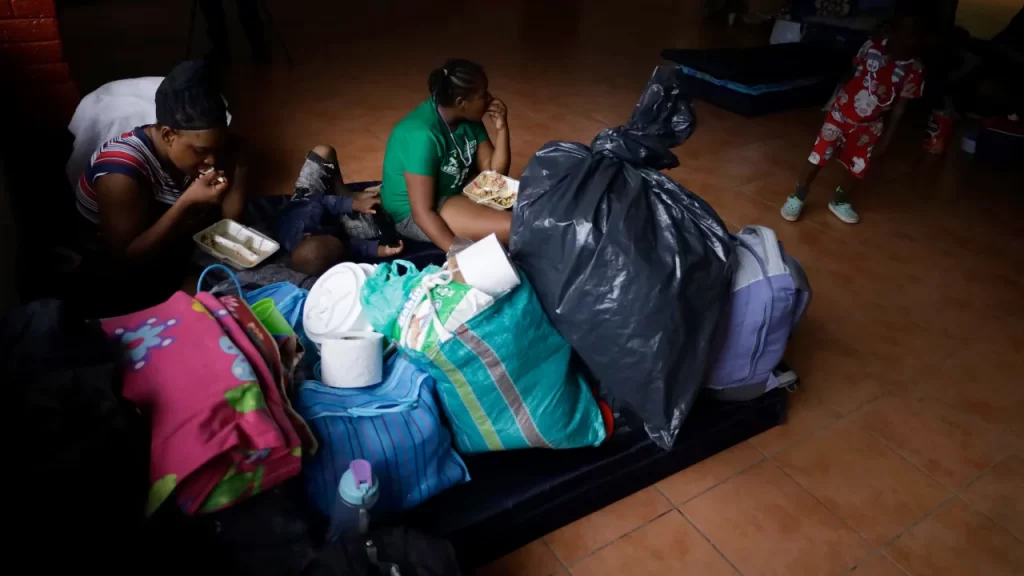Mexico Launches New App to Speed Up Asylum Process
Mexico is launching a new app to speed up its asylum process amid record levels of asylum seekers. The app, called the “pre-registration system,” will allow individuals to register their intent to seek asylum online.
The app is being launched in response to the overwhelming number of asylum requests in Mexico City. For the first time in history, more asylum applications were filed in Mexico City in the first 18 days of May than in the southern Mexican city of Tapachula, which borders Guatemala.
The head of Mexico’s refugee assistance agency, Andrés Ramírez, said that the app is necessary to “manage an overwhelming number of asylum requests.” He believes that the influx of asylum seekers is in part the result of the end of Title 42 in the US, which brought many more people to Mexico in hopes of crossing the US-Mexico border.
The US CBP One app has been criticized by immigrant advocacy groups, who point out that some migrants lack the resources to get a smartphone, absence of adequate internet access to use the app, and may struggle with language and literacy barriers. Groups have also reported concerns about how the app’s facial recognition technology handles darker skin.

US Customs and Border Protection has said that the app has worked as intended and that more than 79,000 individuals have scheduled appointments since the app was launched in January 2023. CBP also revamped the app earlier this month to address some of the concerns, and for the first time allowed people in central Mexico – not just on the US-Mexico border – to apply.
It remains to be seen how effective the new Mexican app will be in speeding up the asylum process. However, it is a welcome attempt to address the challenges facing asylum seekers in Mexico.
Here are some additional details about the app:
- The app will be available in Spanish and English.
- It will allow individuals to register their intent to seek asylum, upload supporting documents, and schedule an appointment with a Mexican immigration official.
- The app is expected to launch next week in Mexico City only, with other areas expected to be added at a later date.
The app is a welcome step towards streamlining the asylum process in Mexico. However, it is important to note that the app is not a guarantee of asylum. Individuals who apply for asylum through the app will still need to go through a full evaluation by a Mexican immigration official.
Mexico’s asylum software application is similar to CBP One, in that individuals start the process by entering their information online, which is hoped to speed up the processing. But there is a significant difference, as Ramírez points out: unlike the CBP One app, his agency’s app allows individuals to apply from inside Mexican territory.
Still, immigration experts warn against using apps in the asylum process.
“You shouldn’t have to schedule an appointment when you’re running for your life,” says Kica Matos, president of the National Immigration Law Center who has witnessed the use of the CBP One app first hand.
“The CBP One app is a logistical and humanitarian failure that should not be replicated by Mexico or any other country,” Matos said.
Matos said she met countless migrants fleeing danger in their home countries who were waiting in Mexico in dangerous conditions, and many of them experienced glitches, facial recognition issues for those with darker skin and language access problems.
Meanwhile, the number of migrants living in limbo as they wait in Mexico City for their asylum claims has become dangerously unsustainable, aid groups say.
Jose Antonio Silva, migration project coordinator for Doctors without Borders in Mexico City, says his organization is concerned about health and living conditions for those currently in overcrowded shelters or living on the streets.
“The shelters, most of them with their own resources, face not only overcrowding problems, but also the challenge of being able to cover the different basic needs of people: health, food, water, hygiene, sanitation, and information,” Silva said.
Silva said migrants staying in the saturated shelters are predominantly Haitians and Venezuelans, followed by Mexicans and Central Americans, with a few Afghans and Angolans, too.
His observations match COMAR’s data, which shows that during the first four months of the year, the top five nationalities seeking asylum in Mexico were Haitian, Honduran, Cuban, Venezuelan, and Salvadoran. Angolan was the only nationality in the top 10 from outside the western hemisphere, COMAR data shows.
Migrants are particularly vulnerable to extortion, robbery, physical and verbal aggression, sexual abuse, and discrimination, and Silva worries that sleeping on the street could increase their chances of being revictimized.
From January 1 to May 18 of this year, more than 56,000 people have sought asylum in Mexico, according to Ramirez. At that pace, Ramírez said his agency is expecting to receive about a record-breaking 140,000 applications by year’s end.
“Seeking asylum is a legal right that should not be dependent on having a smartphone or using an app,” Matos said. “Our countries should instead be working together to create fair and humane systems that meet the realities of our world in the 21st century.”



